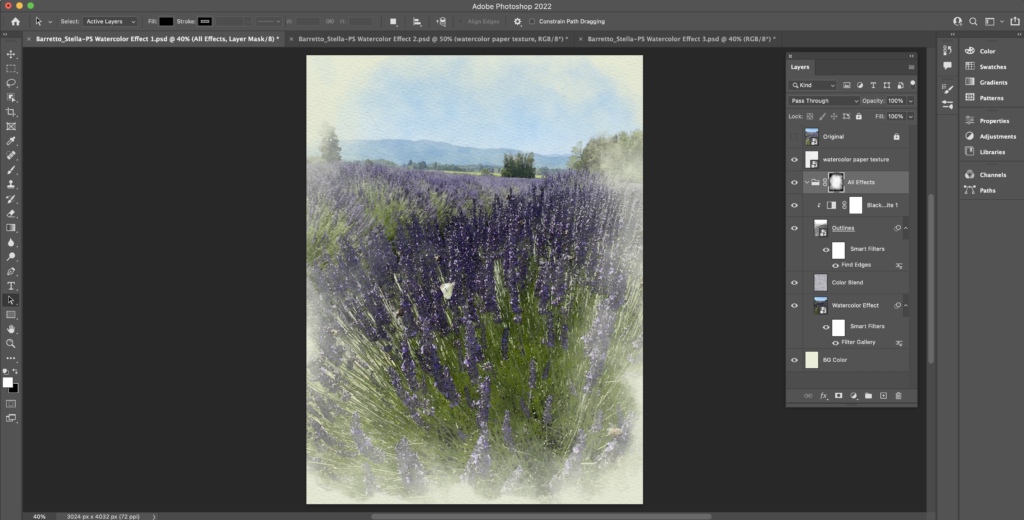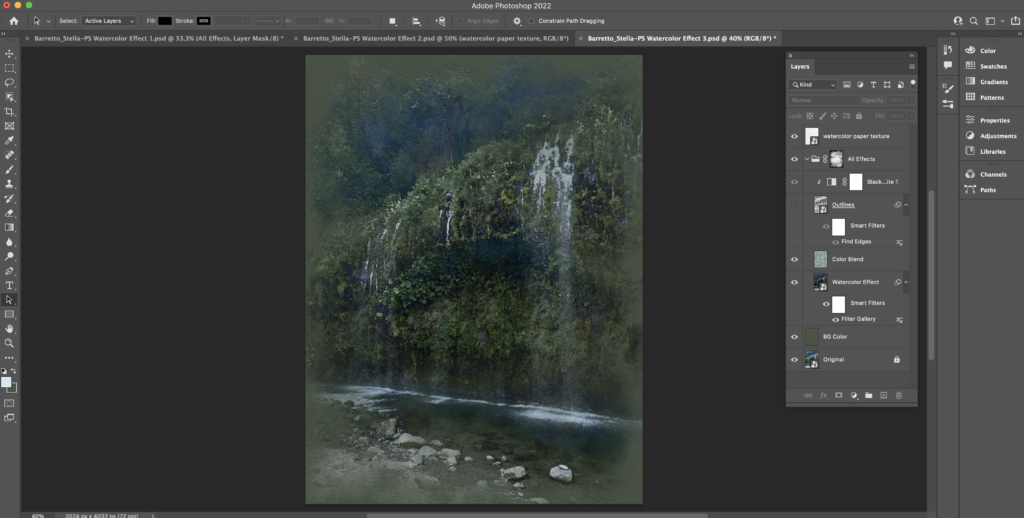This series of projects prompted us to ponder the question:
“Who am I?”
I explored this question by writing in both lyrical and personal essay forms before translating my insights visually into a video essay and other creative media. I deepened my technical communication skills through modern professional equipment and applications such as Adobe Photoshop, Illustrator, After Effects, Premiere Pro, and HTML/CSS/jQuery.
Although I still don’t have an exact answer to “Who am I?” (I’m not sure it’s a question you can give an exact answer to), the projects I’ve done have certainly given me insight into what’s important to me and what I can offer.
Mandala
The mandala project implored us to express ourselves visually. Mandalas, being a free-form and flexible form of art, allowed us to put a lot of ourselves into it. When it came to my mandala, I took a more abstract approach by including odd shapes and forms and incorporating hidden details.
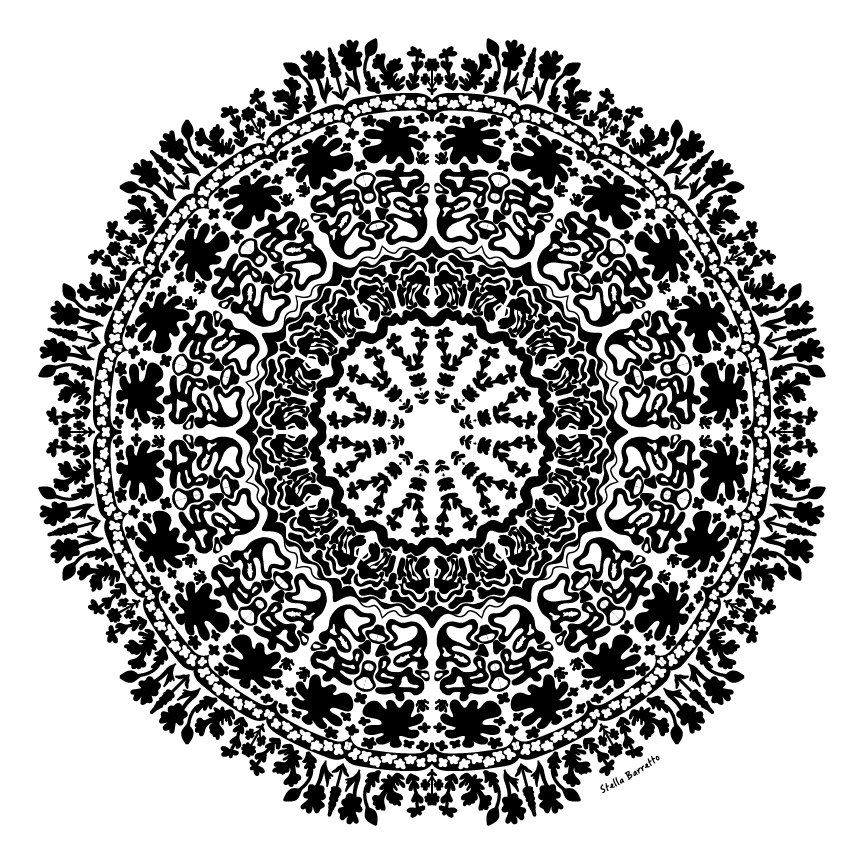

If I were to do something different in the creation of my mandala, I would have not tried to accomplish a theme. While I was working on my mandala, I discovered that it was more enjoyable for me to draw without a plan and let the mandala come together naturally. The next time I do a mandala, I am going to put less pressure on myself to achieve a certain vision.
Something I valued about this project was the time to relax and focus on something that doesn’t cause any stress. I’ve been feeling a lot of pressure throughout the mandala project and it was nice to listen to music and just sit down and draw. I also valued getting to see a physical product at the end of the project.
In regards to our Reflections unit overarching question “Who am I?”, I learned that it’s important for me to let go and not put pressure on myself because of what others are doing.
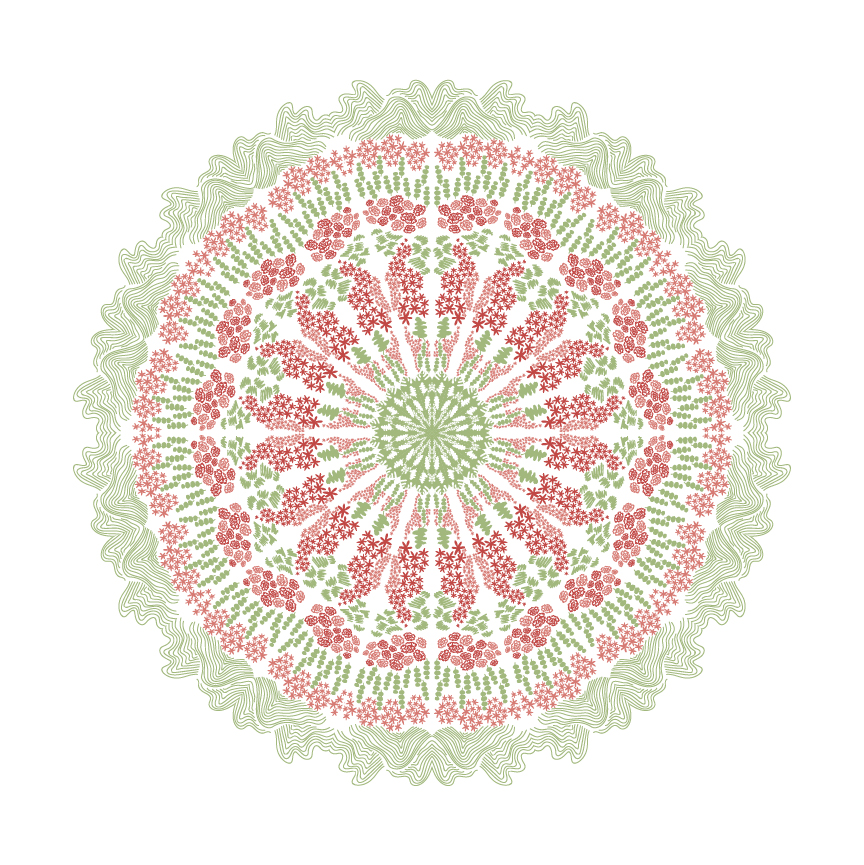
For my color mandala, I took inspiration from my first mandala. I chose a limited color palette and used repeating shapes throughout the piece. Since a lot of the shapes are similar, I found that using different colors made the pattern more varied and interesting. This mandala came together a lot faster as I allowed myself to go with the flow and add things as I went along. I expanded upon the theme of nature with this mandala, including more flowers and leaves as well as incorporation mountains at the edges.
Color Mandala/Black and White Mandala Comparison

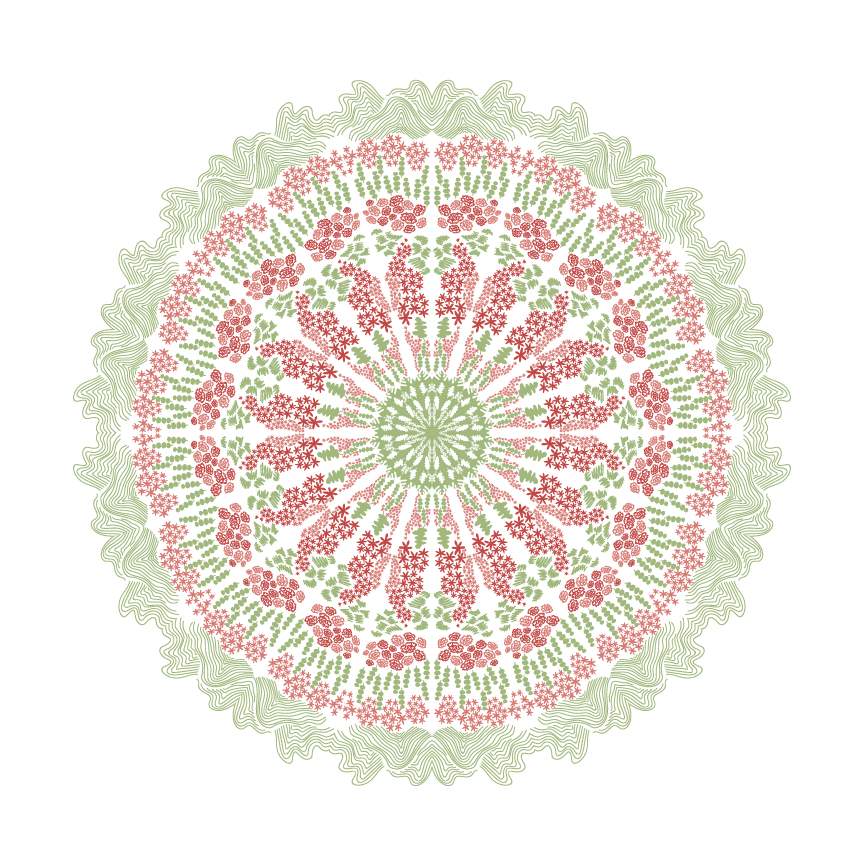
If the images do not display above,
On a Mac, press Command + (plus) then press press Command – (minus)
On a PC, press the Cntrl + (plus) then press the Cntrl – (minus)
Photoshop Art
In Digital Media, we translated traditional painting techniques into digital art in Adobe Photoshop. We used different brushes and pen pressure to give our art more dynamics. We applied these techniques to both pastel and watercolor paintings.
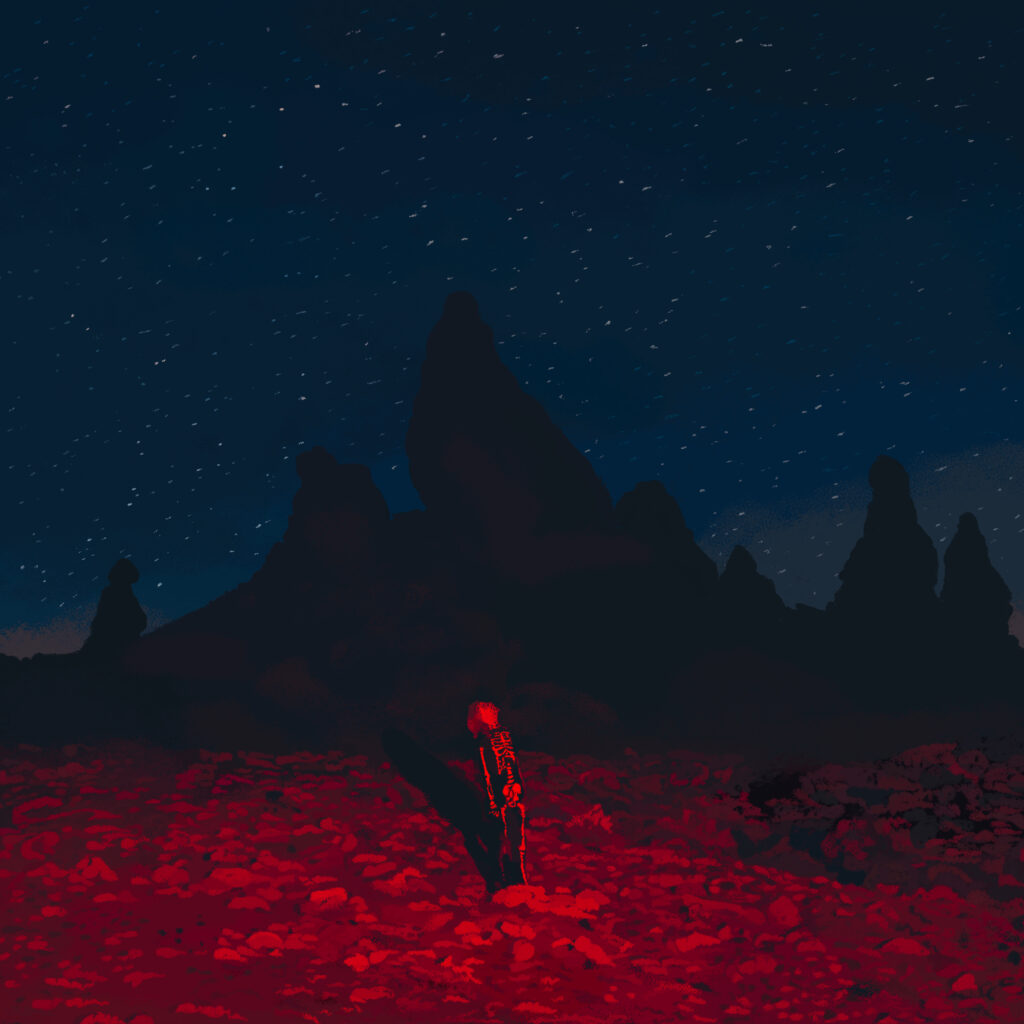
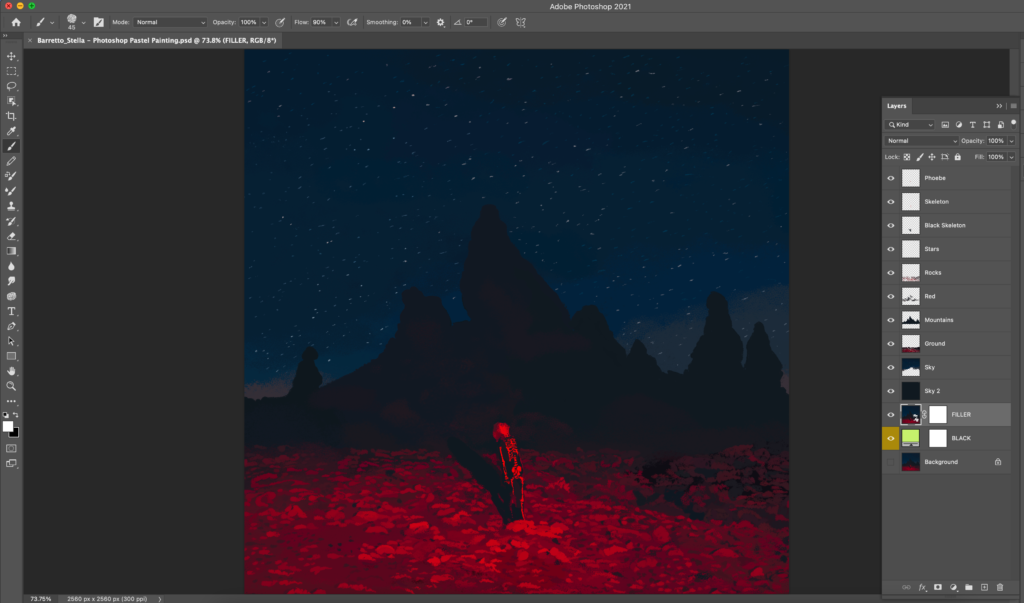
I found it slightly difficult to paint in Photoshop. Since I mainly see it as an editing software, it was interesting to use it for a different sort of media. As I worked on this, I found painting it Photoshop to be relaxing (I especially appreciated the eyedropper tool). I also liked the brush I used in this project: Kyle’s Ultimate Pastel Palooza. That combined with the use of the Wacom Tablet simulated traditional painting. I liked using a textured brush as it added more interest to the painting and enabled me to paint more expressively whilst maintaining the texture of the piece.
In creating this piece, I valued the time to relax and paint. It was meditative to match all of the textures and colors. It was also relaxing to paint directly on top of the image –– something that is much harder to do with traditional mediums.
Something I learned about myself in creating this piece is that I am very reliant on the command Z key command. On top of this, I learned that digital art is more forgiving which allows me to experiment and try different things before settling on an approach.
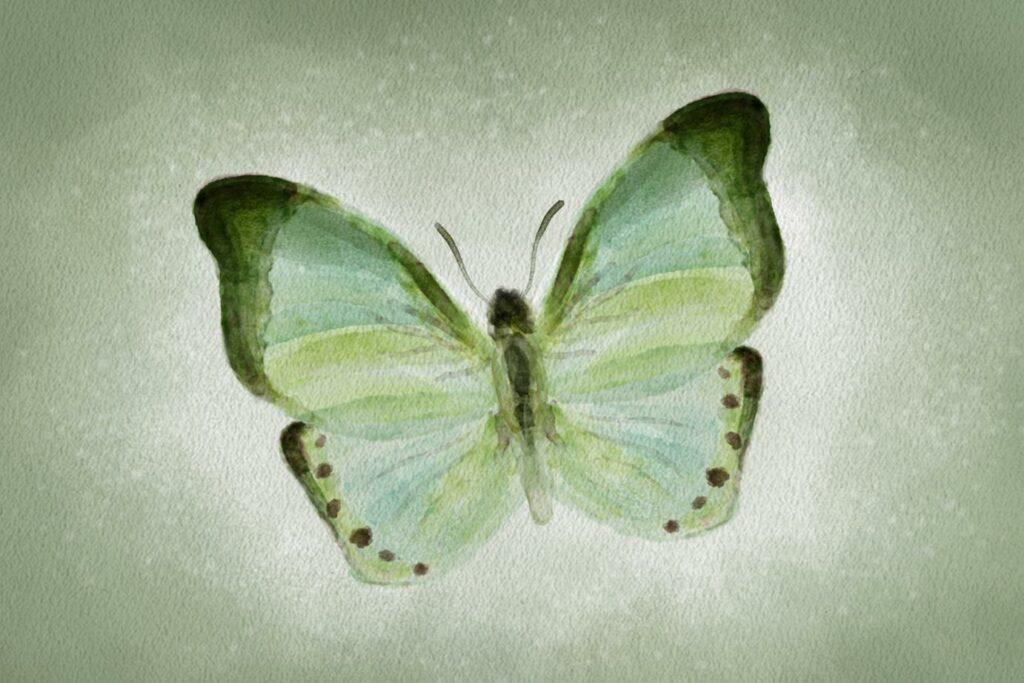
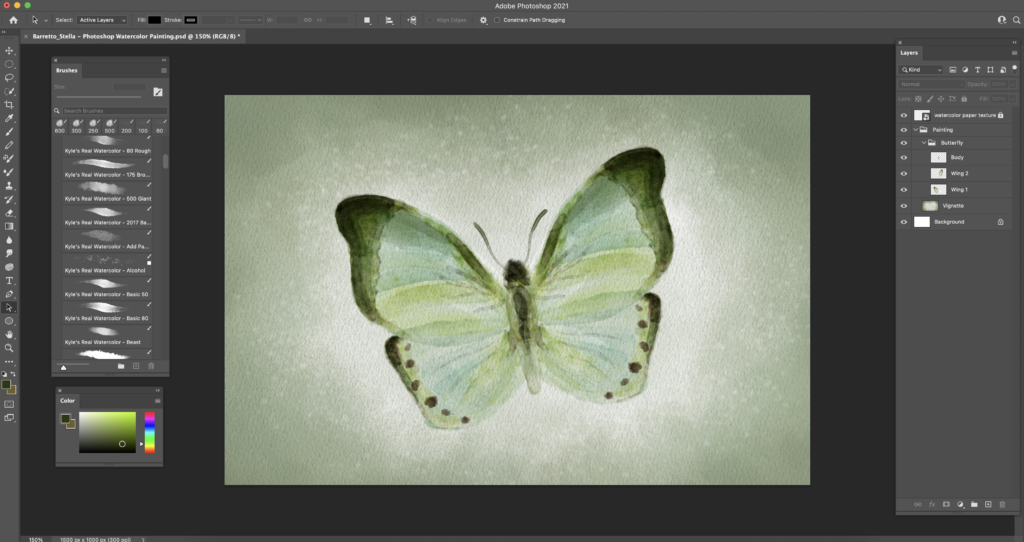
This piece is of a butterfly. I was looking through Pinterest for inspiration and stumbled upon a bunch of images of green butterflies. I found the colors to be intriguing as they were very nature-like, like leaves but more fantastical. They also looked a lot like watercolor –– particularly the spots and veins of the wings.
Mort Solberg said in the article “Why Watercolor?” that “The wonderful ‘accidents’ that happen with the flow of watercolors can not be achieved by another medium that I know of.” I was surprised that this was true in digital watercolor. The brushes mimicked real watercolor which allowed colors to flow together and mix. I was able to achieve some interesting textures, both intentionally and by mistake, that added more depth to my painting.
Between working with the pastel and watercolor brushes in Photoshop, I prefer the pastels. I found it difficult to work with watercolor in illustrator because of the qualities of the brush. It was hard for me to transfer what I had learned about analog watercolor to digital watercolor which made it harder for me to get accustomed to painting in Photoshop. After I got a hang of the brushes, it was really cool to see how the digital brush mimics real watercolor and it became easier to apply different techniques.
We also used Photoshop tools to apply a watercolor painting effect to our own photographs.
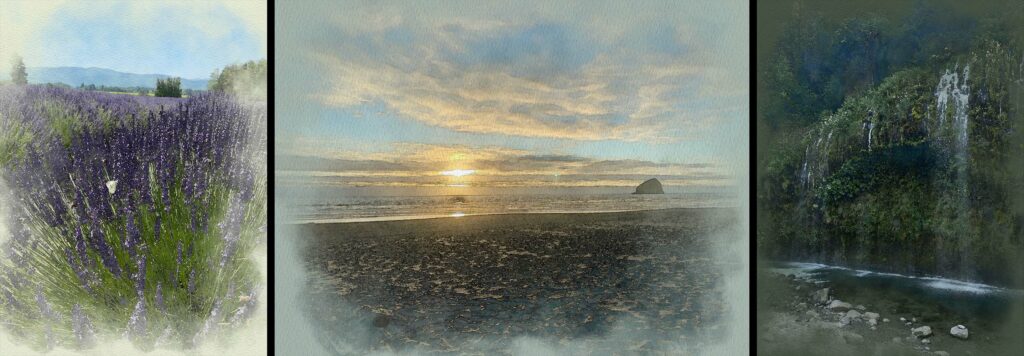
These images are photos I took on a road trip to the Pacific Northwest over the summer. The first photo is a lavender farm. I chose this photo because the colors reminded me of a painting and I thought it would work well with the watercolor effect. The second photo is of a beach just before sunset, I thought the clouds had a watercolor-esque feel to them. The third photo is a waterfall that I hiked to. I thought the waterfall looked like something out of a fantasy world –– and with the watercolor effect, it kind of looks like it could be in a story book.
It surprised me how simple and fast it was to apply the filters to the second and third photos after I had finished the first one. There are so many tools in Photoshop that it’s overwhelming but it was surprisingly easy to achieve this effect.
Although I don’t see myself using this exact effect again, the knowledge of how to do it can help me apply different techniques in the future. I’m looking forward to exploring other effects and filters in future projects.
Beyond painting, we used different techniques and Adobe Photoshop tools to composite images.
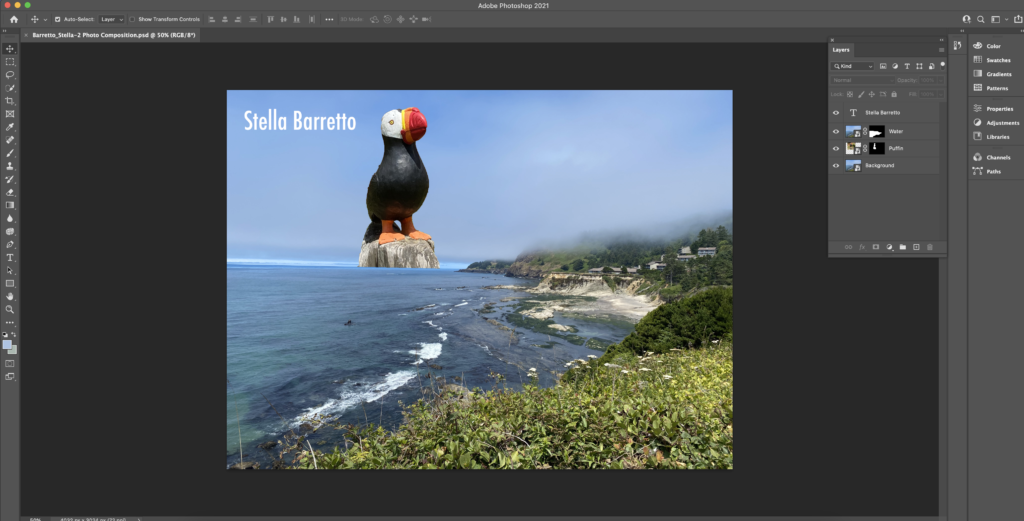
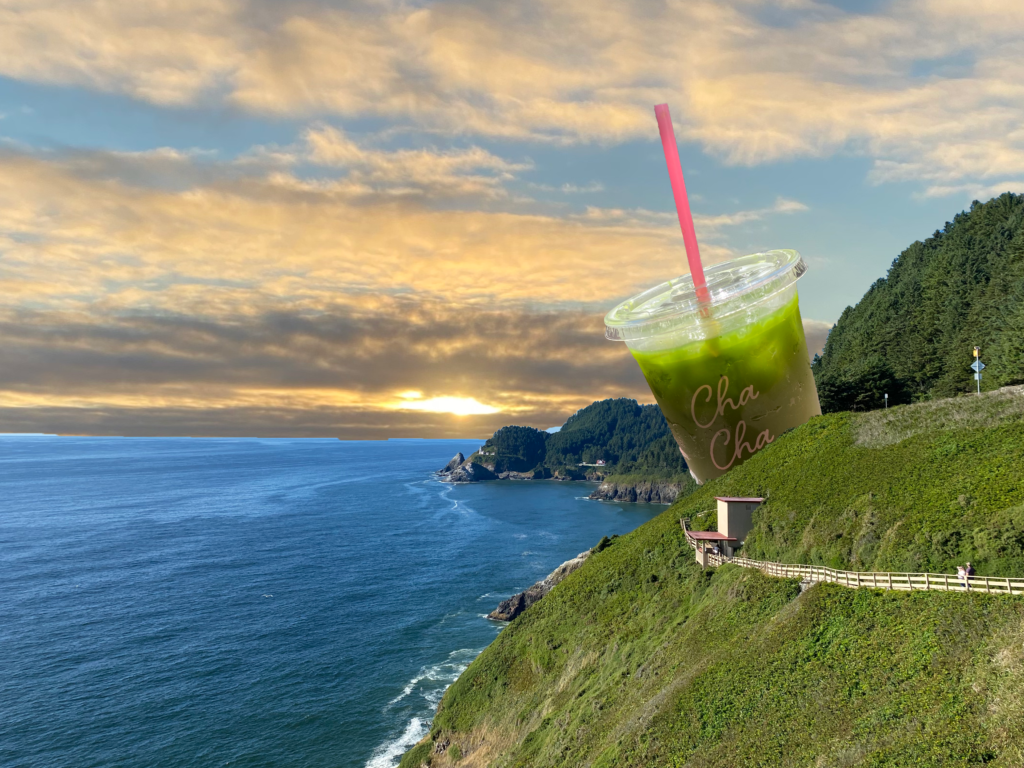


My surreal composition doesn’t have a specific message, but my goal was to focus on light and color. My composition combines a stained glass window with a photograph of a beach at sunset. I thought it would be interesting to work with both natural and man-made elements and combine them into one. In my composition, I have a sandy path leading up to the window. Through the window, you can see a film strip of flowers. Beyond the window, I combined the clouds with images of flowers. I didn’t have a message in mind while creating this, but it could represent how we see and perceive nature.
While creating this, I found the quick selection tool incredibly helpful. I used it to create masks and use collage techniques to piece together my composition. I also used blend modes and different opacity settings.
I found it challenging to create a surreal composition. My composition originally began more realistic and I had to push myself to introduce more surreal elements. Despite this, I enjoyed finding different images and components to piece together.
Personal Essay
This project was definitely the most difficult for me. Writing a personal essay required me to go beyond just expressing myself through writing — I had to write about myself. As a teenager who has only known herself for seventeen years, this was very challenging.
Despite many struggles in the beginning, I found it fulfilling to uncover little stories and parts of my life that make me who I am. Piecing together the essay began to be like piecing together a puzzle. As someone who enjoys puzzles, once I got into the essay it became much easier and more enjoyable to write.
We began this unit by reading “College Essay Essentials” by Ethan Sawyer. The book broke down essay-writing into steps and prompted activities to generate ideas. The most helpful part about the book was the sheer amount of sample essays. They varied in topic and structure and provided inspiration and ideas as I crafted my essay.
Video Essay
In Film, we were tasked with creating a two-minute video essay inspired by a past Chapman University prompt. The process began with writing a script, as a short essay was the basis of the film. From there, we worked with audio and lots of B-roll to represent our messages visually.
My film explores my need for human connection through the metaphor of a pet rock. I had a lot of fun matching different video clips to my essay to both support and expand upon my writing,
Original Script: Why is it that I’m so drawn to inanimate objects? Like oh my god it’s just a rock. Not even a cool rock. I don’t need a rock. It’s just a rock. Sh** –– what do I do with it now? It almost feels compulsive, like I was drawn to this rock. I was about to leave it behind when thoughts popped into my head like “it’s so sad and alone”, “it needs you”. It’s a rock, shut up. I can understand why humans are attracted to some objects: maybe they’re shiny or colorful or maybe they remind us of something or someone. Maybe they can be sold on Ebay. But a rock? It’s just a rock. Maybe there’s a part of me that relates to this rock: small and alone among other rocks that are all somewhat the same. I’ve felt like that –– hell, we’ve all felt that. I wouldn’t wish that feeling upon a rock. But then again, something must stand out about this rock that made me feel the need to “save” it. Maybe its shape somehow reveals a distinct personality, but I doubt it. I think I could elicit an emotional reaction by naming a rock Steve, giving it a complex backstory, and then throwing it into the ocean. But I don’t think I could live with the guilt of doing that. I think maybe it’s part of our nature to form connections to different things: people, places, things. Or maybe it’s just a childish curiosity that we never grow out of. Whatever may be the case, I think life would suck if we didn’t have these sorts of connections –– we kind of need them (I know I do). Of course a person would be preferable, but I’d rather have a rock by my side than feel alone. I don’t mind being alone –– but feeling alone really sucks, like a tunnel you can’t quite dig yourself out of. I think our tendency of forming connections to people and things adds some meaning when life feels static and overwhelming. because we really do just live on a rock. We’re all just tiny specks on Earth –– and Earth is just a rock, right?
